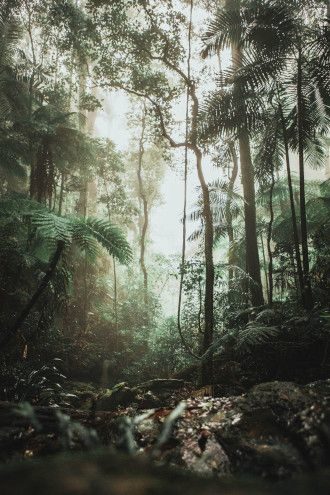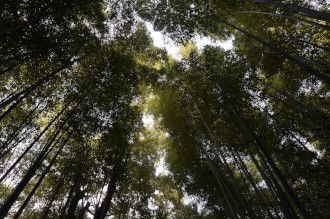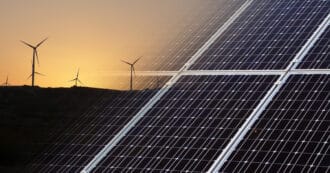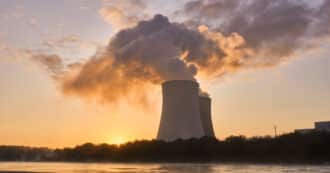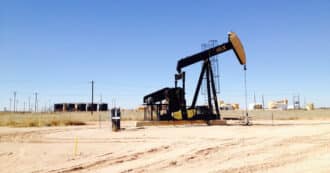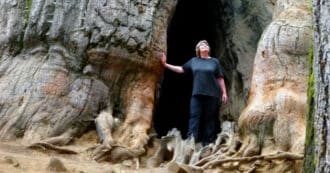By Ilana Stein – Trees come in all shapes, sizes and species, from enormous sequoias and wide baobabs to the dwarf willow, possibly the smallest species of tree in the world at 1.6 cm high. But while trees represent the top of the plant ecosystem, there is more to them than that. They represent one of the primary resources on planet Earth, on which all living things depend.
Trees are defined as plants which contain a woody stem and side limbs. As defined by the Oxford English Dictionary: “a woody perennial plant, typically having a single stem or trunk growing to a considerable height and bearing lateral branches at some distance from the ground”.
What is a Renewable or Nonrenewable Resource?
Renewable resources are natural elements or items that can be used again and again, as they renew themselves in some way, or never run out such as sunlight or water. Importantly, such a resource can also be replaced, either naturally or through human endeavor.
If a resource cannot be reused then it is nonrenewable. Nonrenewable resources include coal, gas and oil. Whether something is a renewable or nonrenewable resource, we need them for many reasons such as “to produce energy, generate electricity, enable transportation, and also use resources for agricultural production”.
The Tree As a Renewable Resource
A single tree can be said to be a renewable resource of nature, in the amount that it gives to and benefits humanity and other life.
Like all plants, trees hold the key to survival on Earth. All animals depend on oxygen in the air to breathe, and expel carbon dioxide in return. The trees take in carbon dioxide and release oxygen into the atmosphere. In this way, trees help to balance the gases and energy being cycled on Earth.
Put simply, trees allow us to breathe.
Trees also release water vapour in a process called transpiration. This water evaporation releases the precious liquid back into the atmosphere to be transformed into clouds and then into rain, thus helping the water cycle. This moisture combined with shade mean that trees cool the area around them.
Trees are also homes or habitats. Animals depend on trees for sustenance, shade, and sometimes as a place to live. For example, birds nest in holes in the trunk, or build their nests in the fork of tree limbs. Therefore, it can be said that “trees can be utilized as a resource of energy, food, and power”.
Harvesting Trees
Then there are the benefits that trees provide when they are cut down or harvested. For example, the timber is made into wood products such as furniture, houses or paper products.
Once a tree has been cut down, that particular tree can not be reused. After all, it is no longer a tree. It is now a piece of wood, or a piece of paper. However, it can regrow by saving its seeds, using only a small part of the tree or the tree limbs or by leaving the mother plants intact. In this way, it can be said that trees are a renewable resource.
Renewing a Tree
Trees as living things are renewed by growing from a seed into the towering green plants that are an essential part of our world. The growth rate, however, depends on the amount of rain, the amount of sunlight, good soil and other elements coming together. Some trees take many years to grow while others are just the opposite, shooting up towards the sun in a matter of months.
“Biomass” is another way that trees contribute to renewable energy. This is when wood waste – for example, parts of trees such as the bark, branches, or sawdust shavings can be used to fuel carbon-neutral electricity. This is another way that trees are a renewable resource.
However, if new trees are not planted to replace those that have been harvested, then a tree has become a fossil fuel – and in fact: “because wood is a less energy-dense fuel, biomass-burning plants emit more CO2 from their smokestacks than coal to generate the same amount of electricity”.
Seeing The Forest For The Trees
While trees as individuals may be renewable resources, as groups – in forests or woods – care must be taken to ensure they are sustainable and can be conserved so as to continue to help to balance the planet’s elements and continue to be a valuable resource.
Forest Products
Forests are harvested through logging, for the organic material that trees produce. The wood provides timber for many forest products, examples of which are wood for furniture, poles, packaging, paper products from wood pulp, and other materials.
However, forests are often destroyed because of the space it creates: for example, commercial farmers and companies are taking down trees to create grazing areas for animals – particularly to grow beef cattle which will eventually end up as hamburgers on a plate.
In the Amazon and other developing areas, another type of destruction is taking place, albeit at a slower rate than beef farmers. This is known as subsistence farming, and “is where poor farmers occupy plots of the forest to grow food to feed themselves and their families. They clear forest and then burn it, hence the name slash and burn. They grow crops until the soil is exhausted and then move on”.
Deforestation and Damage
In our unending search for more energy and more things, we are destroying forests at a rate that makes it difficult for them to be naturally replaced. In addition, when wood and other by products of trees are burnt, this causes further imbalance by releasing carbon into the air instead of the trees’ oxygen. Global warming and climate change is a result of such global-scale deforestation.
In the place where the forest once stood, soil is now eroded and the topsoil is washed away in floods as there are no trees any longer to hold the soil in place. Trees as fossil fuels provide energy which is an integral part of the modern technological world, but at a cost that is not renewable.
How Can We Renew Forests?
If we do not deal with the loss of our rainforests, by reforestation, trees will rapidly become a nonrenewable resource. Planting trees is essential to make forests renewable!
New forests must be planted, and existing ones must be managed sustainably. Sustainable forestry means harvesting trees in a way that allows the forest as a whole to remain intact: “The wider availability of sustainably grown and harvested biomass could help move consumers away from non-renewable energy sources like oil all the sooner”.
Forest products are regulated and certified, where owners “adhere to sustainable forest management practices that ensure the provision of wood supplies, wildlife habitat, recreational opportunities and clean water.” Sustainable forestry means that the trees are used sustainably, are not used as fossil fuel, and therefore can continue to be a renewable resource.
In this way we can maintain the balance of the world and it is in our best interest – as all oxygen-breathers – to do so.
Trees and Religion
Trees play a major role in almost every religion, perhaps because trees play a major role in life. Without trees there would be no life. Trees are the air we breathe.
It is difficult for a religious person to look at a tree and not be in awe at God’s Creation. Here is a fantastic excerpt from Eco Bible that discusses the importance of trees in the Bible and in life:
Leviticus 27:30 – All tithes from the land, whether seed from the ground or fruit from the tree, are the Lord’s; they are holy to the Lord.
Why are the “fruits” of trees, both physical and metaphorical, holy to God? It’s not just their fruit that we cherish. In the words of Rabbi Matis Weinberg (2000): If we did not have the development of an earth with trees, then we simply would not be here. There’s no way we can translate the sun’s energy into life and there is no way that we can have the oxygen that we need to live without trees. The earth, as our environment, is maintained because of trees – they are basic fuel, basic shelter, basic food, and air. If that’s the case, then it makes a lot of sense that when God originally creates the world, the first thing He does when He has a world is plant trees.
Another statement in the Bible discusses the prohibition of destroying trees needlessly, even if one needs the wood – a command that we can heed today.
It’s up to us to protect our trees for the sake of future generations. Trees can be a renewable resource, but only if we give them the chance to grow and reproduce. It’s up to us to make the choice – and make our world greener than ever!
* Featured image source


